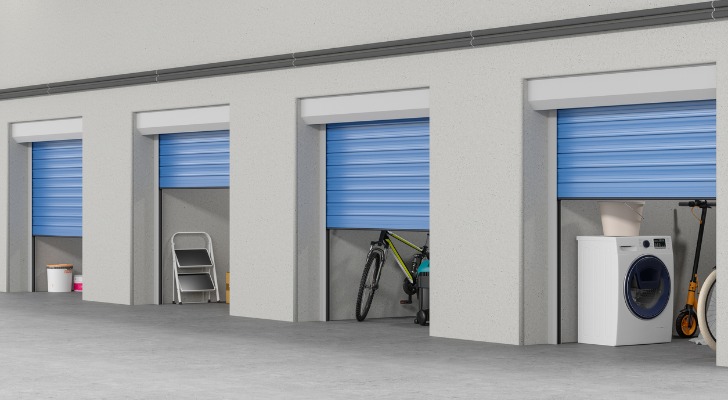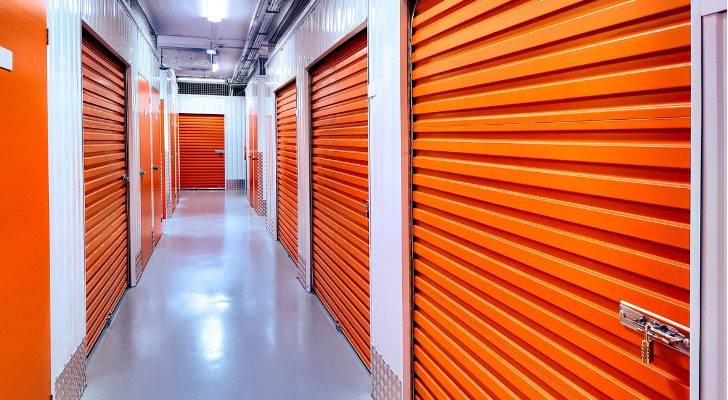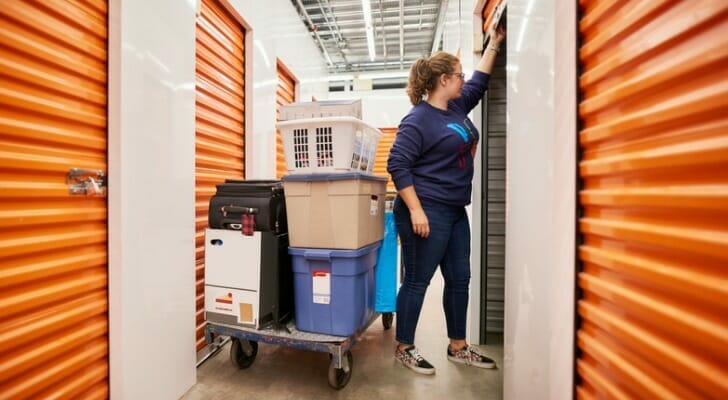In recent decades, real estate investors have diversified their portfolios by capitalizing on emerging market opportunities like self-storage. Self-storage facilities serve as secure storage solutions for individuals and businesses, accommodating various products, materials and more. Given the high demand for additional space to store household belongings and business equipment, self-storage facilities have become indispensable nationwide. Here’s a look at how to invest in storage units.
For help figuring out your personal investing strategy, consider working with a financial advisor.
Buying Storage Units: The Basics
Self-storage investing means investing in storage units that individuals and businesses use to stow their spare belongings and assets. For example, a homeowner might need room for seasonal lawn equipment. For businesses, storage units can be used for surplus inventory instead of throwing it away. In either case, they’ll pay a storage facility a monthly fee to place their items in a secure unit. As an investor, you can own and operate a storage facility or purchase shares in a facility.
Self-storage is a solid investment for several reasons that attract investors. First, the asset has high earning potential. Storage units cost less than residential real estate and other forms of commercial buildings, meaning more money in your pocket. For example, Storeganise reported that the average profit margin for storage facilities is 41%.
Second, demand for self-storage continues to grow as baby boomers downsize and businesses shrink their workspaces.
As a result, the risk of investing in self-storage is low due to high profit margins and continuous demand. Customers need storage whether the economy is strong or a market downturn occurs. Therefore, the industry is a viable way to diversify your portfolio.
The Self-Storage Market
Here’s how the self-storage business works: the storage property owner (you) charges customers to use the space for storing their belongings. These storage spaces are available for rent every month and come in different sizes according to the customers’ needs.
The specific type of storage unit you will promote depends on your client base. For example, if your ideal customers are sports enthusiasts, they may prefer padding, shelving and slat walls to store their equipment. On the other hand, a family moving across town might only need a bare unit to store their belongings temporarily. Therefore, understanding your target customers is vital in determining the type of units you purchase or build.
In addition, the lease contract terms are the backbone of the business, and you can adjust them monthly. This feature allows you to adjust prices from one month to another, unlike traditional real estate contracts, which do not apply to the self-storage market. As a result, you can change with the market and cater to your customer’s needs.
Fortunately, investors of all scopes and financial backgrounds can invest in storage units. For example, suppose you want to experiment with a modest investment in the self-storage industry. In that case, you can purchase shares in self-storage facilities. So, you can actively invest in self-storage (through ownership of a facility) or take the route of less commitment and risk through passive investment (shares in a company).
Types of Self-Storage Facilities

Self-storage facilities can be classified based on their purpose and capacity. Each type of facility has its advantages and disadvantages.
Climate-Controlled Storage
Certain items and materials are susceptible to damage from heat, cold or extreme humidity. For example, art, furniture and musical instruments benefit from climate control. To safeguard these items, climate-controlled storage units are available.
As a result, a regulated environment and security are top priorities when storing fragile possessions. Because climate-controlled storage units cater to various market needs, they are more expensive, and investors can charge higher prices for their specialized services.
Drive-Up & Outdoor Storage
Outdoor or drive-up storage is the most widespread type. It consists of rows of units resembling garages. By pulling up the door, the customer has complete access to their storage unit. These facilities are the most affordable option available.
One of the benefits of outdoor storage facilities is that they require minimal maintenance and employees. In addition, they are user-friendly, making them popular among individuals needing storage space. Lastly, these storage centers can bolster their security through cameras, electronic gates and security guards.
Mixed-Use Storage
The self-storage industry serves a diverse range of customers with varying needs. To meet these niche demands, many storage facilities combine different services, resulting in mixed-use storage facilities.
A significant advantage of mixed-use storage facilities is the ability to cater to various needs. For example, a self-storage facility strategically located in an urban setting can help nearby residents with extra belongings while serving local businesses. This flexibility makes mixed-use storage facilities valuable assets, serving a broad customer base.
Vehicle Storage
Self-storage facilities also help customers with vehicles such as cars, boats or RVs. Vehicle storage is an ideal solution for those seeking a sheltered, locked parking spot.
Vehicle storage often offers additional services, such as temperature-controlled units to ensure the preservation of classic cars. As a result, customers turn to these facilities annually to protect their vehicles, especially near high-demand spots such as airports and harbors.
How to Invest In Self-Storage
Here are four ways to invest in self-storage:
1. Purchase Shares in a Real Estate Investment Trust (REIT)
If you aren’t comfortable owning and operating an entire facility, you can invest in a real estate investment trust (REIT) instead. These companies allocate investors’ funds across various sectors, often specializing in a particular focus. So, finding a REIT specializing in storage units can give you exposure to this profitable industry.
2. Invest in a Publicly Traded Storage Business
Similarly, you can buy shares in corporate storage companies on the stock market. If the company does well and the stock price increases, you can sell your shares for a profit.
3. Buy an Existing Facility
You can get more involved by purchasing a self-storage facility of your own. This option means running the business (or hiring workers to do so) and collecting monthly payments from your customers. As a result, you have higher earning potential than investing in a REIT.
4. Develop Your Own Facility
If there aren’t any facilities for sale near you, building one yourself is another option. Remember, you must purchase a suitable plot of land and manage the facility’s construction. While doing so takes additional time and money, it’s a way into owning a storage facility and enjoying the profits.
Drawbacks to Buying Storage Units
Despite the advantages of investing in self-storage, it’s essential to understand the potential challenges in this type of venture. Depending on your business model, financial circumstances and location, you’ll face different obstacles. Fortunately, you can adjust your approach as needed to overcome such hurdles.
First, managing client expectations requires a composed demeanor and a focused strategy. For instance, a customer who just lost their job and housing can come in, desperate for help and lacking the resources for a monthly payment. As the owner, you’ll have to decide how to go about the situation and risk losing money.
Furthermore, when competing against rivals who offer affordable storage spaces in prime locations like the city center, it’s best to research the local market. Then, you can evaluate your position compared to the competition and modify your approach to enhance your business.
Is Investing in Self-Storage Right For You?

With all the preceding information in mind, you can decide how self-storage would fit into your portfolio. If you’re interested in real estate, self-storage is an excellent method because it is less expensive than typical commercial real estate. In addition, it requires less upkeep than residential buildings and can provide a steady cash flow every month.
Remember, a lump sum (usually tens or hundreds of thousands of dollars) is needed up front to invest in self-storage. You’ll purchase partial or full ownership of a facility or construct a facility from scratch. So, you must save up the required money or borrow it from a lender. Either way, these startup costs can be prohibitive to investors without the cash.
Lastly, you can take a less intense approach by investing in a REIT. If you like the self-storage business but don’t want to run a company, you can still enjoy the industry’s robust profit margin by putting money into shares in a self-storage business.
Bottom Line
Investing in self-storage means purchasing a business or shares in a business that protects people’s possessions. Because this industry has a low overhead and charges monthly rent, investors can make substantial gains. To get a foothold in the business, you’ll need to select which type of storage you want to invest in, analyze your local market and find a need unmet by the competition. On the other hand, a self-storage REIT is a solid choice for those who prefer a less hands-on approach.
Tips for Investing in Storage Units
- Self-storage units are excellent assets for a financial plan. However, it can be challenging to know how much cash to allocate toward it versus your other investments and priorities. Finding a financial advisor doesn’t have to be hard. SmartAsset’s free tool matches you with vetted financial advisors who serve your area, and you can have a free introductory call with your advisor matches to decide which one you feel is right for you. If you’re ready to find an advisor who can help you achieve your financial goals, get started now.
- Self-storage is just one way to invest in real estate. To explore the topic more deeply, here are three more ways to add real estate exposure to your portfolio.
Photo credit: ©iStock.com/AJ_Watt, ©iStock.com/onurdongel, ©iStock.com/rzelich
